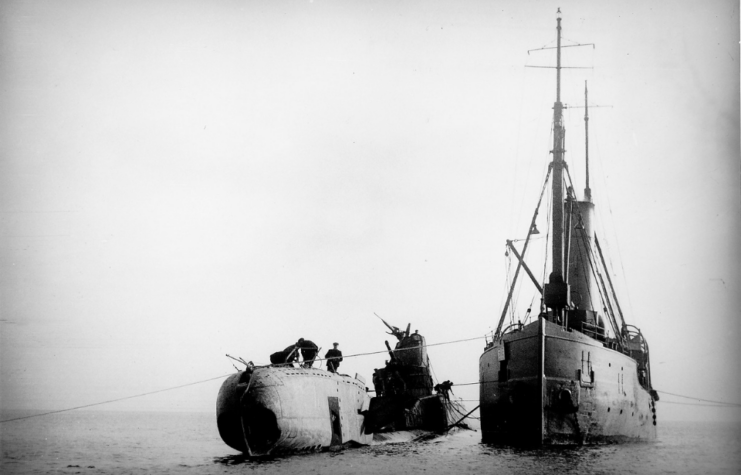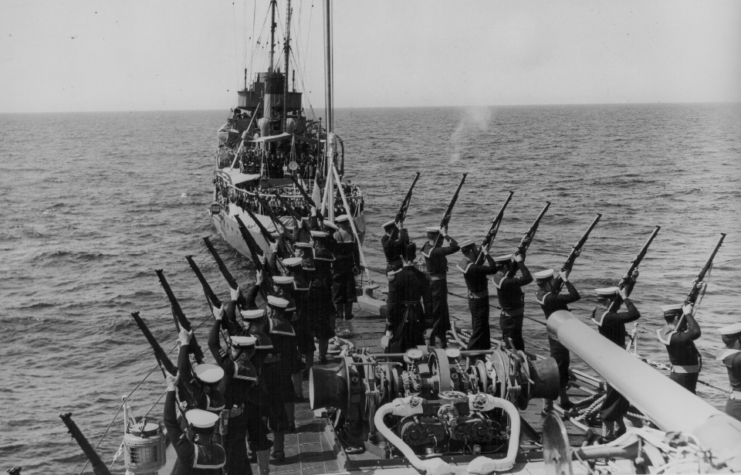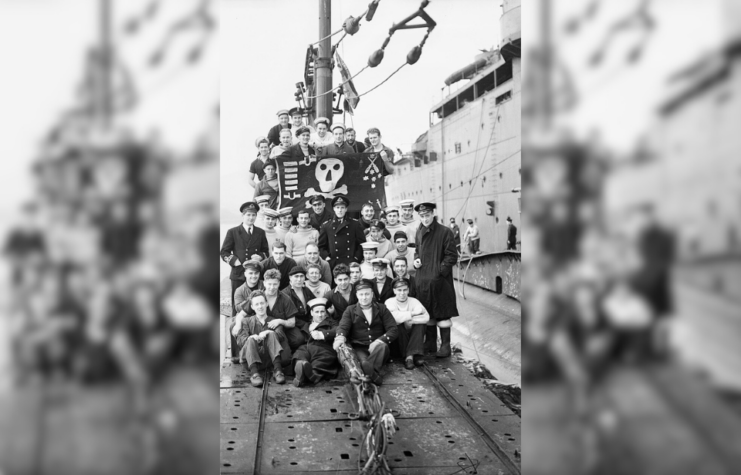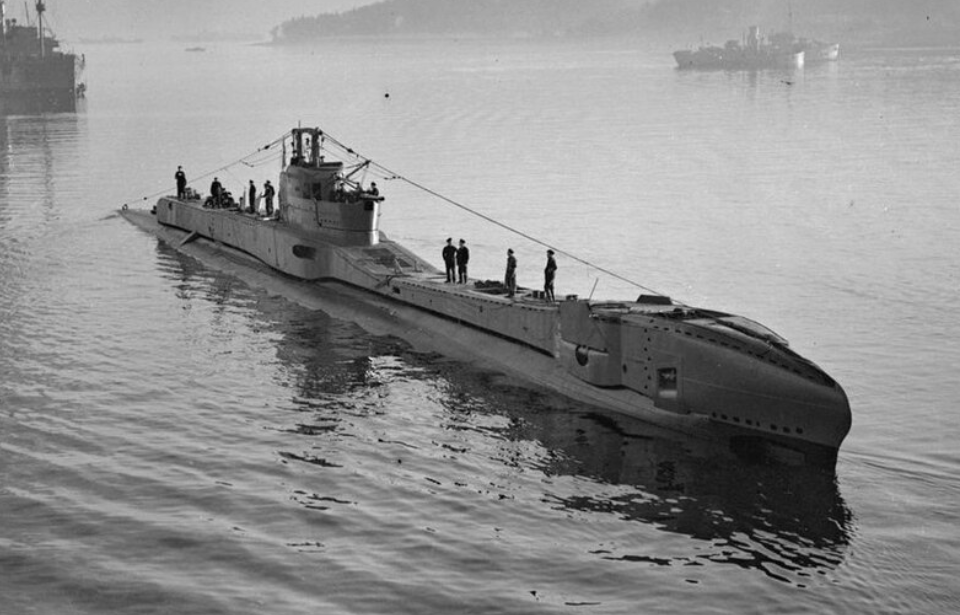The HMS Thetis (N25) was a Group 1 T-class submarine operated by the British Royal Navy. The vessel sank during dive trials in 1939, but was salvaged, repaired and returned to service the following year as the HMS Thunderbolt. She went on to travel across the Atlantic and Mediterranean – that is, until March 14, 1943, when she was sunk by the Italians.
This is the short-lived story of the submarine.
HMS Thetis (N25)

The HMS Thetis was one of 15 pre-war (Group 1) T-class submarines ordered by the Royal Navy. She had a length of 275 feet; a beam of 26 feet, six inches; a forward draught of 12 feet, nine inches; and an aft draught of 14 feet, seven inches. When surfaced, her displacement was 1,090 long tons, a total that increased to 1,560 tons when submerged.
Thetis was powered by two 5,000 horsepower diesel engines and two 2,900 horsepower electric motors. The submarine had a top speed of 15.25 knots while surfaced and a submerged speed of nine knots. At 11 knots, she had a range of 4,500 nautical miles.
In terms of armament, Thetis was equipped with 10 forward-facing torpedo tubes – six internal and four external – and a single four-inch deck gun.
Disaster strikes during sea trials

The HMS Thetis was laid down in December 1936 by Cammell Laird & Co Limited in Birkenhead, United Kingdom. The vessel was launched a year and a half later, but jamming hydroplanes led to a delay in her dive trials. When these issues were rectified, she traveled to Liverpool Bay.
For these tests, Thetis had 103 men aboard – her typical complement of 59, as well as technical observers from Cammell Laird and Royal Navy personnel.
At around 2:00 PM on June 1, 1939, the submarine attempted her first dive, but she wasn’t heavy enough, leading those aboard to check whether the internal torpedo tubes were flooded. The torpedo officer, Lt. Frederick Woods, checked this by opening the test cocks. Enamel paint had blocked the one on the fifth tube, stopping water from flowing out. The inner torpedo tube door was then opened, causing a rush of water that pushed the bow downward and thrust Thetis‘ stern of the water.
After 20 hours and the arrival of the HMS Brazen (H80), the crew decided to abandon the submarine via the escape chamber. Given the room’s size, the crewmen would have to enter one at a time. For each individual, the room would be filled with water, allowing the pressure within to equal that outside, after which the outer hatch would open to let them swim away.
Woods was the first to use it, followed by Capt. Harry Oram, Leading Stoker Walter Arnold and Fitter Frank Shaw, a Cammell Laird employee. When the four men had successfully escaped, a fifth entered the chamber. However, he panicked when water began to fill the room. In his worry, he tried to open the outer hatch, which caused a rush of water, drowning him.
With the outer hatch partially open, the chamber was now inoperable. The rest of the men aboard – 51 crew members, eight naval officers, 26 Cammell Laird employees, seven admiralty overseeing officers, two caterers, four Vickers-Armstong employees and a Mersey pilot – wound up dying from carbon dioxide poisoning, due to the cramped conditions within the submarine.
Returning to service as the HMS Thunderbolt

The Royal Navy tasked the Liverpool & Glasgow Salvage Association with salvaging the HMS Thetis. The effort was successful, although one diver did die from the bends on August 23, 1939. On September 3, the submarine was grounded at Traeth Bychan, Anglesey, at which point the bodies of those within were given a naval funeral, with full honors.
After repairs were made, Thetis was recommissioned as the HMS Thunderbolt.
More from us: The Fatal Collision Between the USS Greeneville (SSN-772) and the Japanese Ship Ehime Maru
Operating under the Thunderbolt name, the submarine saw service in the Atlantic Ocean, as well as the Mediterranean. Among her accomplishments was the sinking of the Italian submarine Capitano Tarantini. The vessel herself was ultimately sunk by the Italian corvette Cicogna on March 14, 1943, off the coast of Sicily. Everyone aboard died in the incident.
